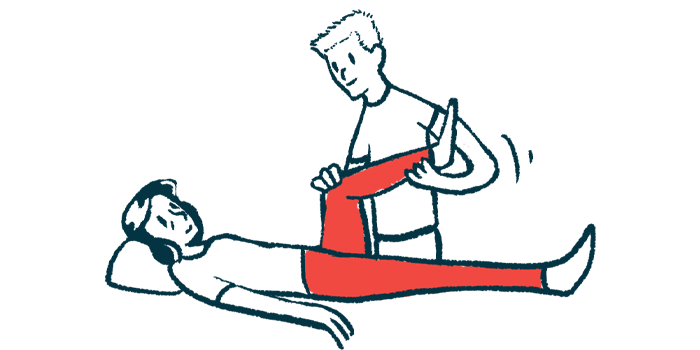Sports Exercise May Help With Life Quality, Neuropathic Pain in CMT1A
Regular physical activity linked to significantly better overall health
Written by |

Practicing sports may enhance life quality and lessen neuropathic pain in people with Charcot-Marie-Tooth 1A (CMT1A), according to a study conducted in Italy.
Patients performing sports regularly reported significantly better general health, social function, and mental health.
“These results encourage the prescription of sport in CMT-1A patients and suggest prospective studies in this field,” researchers wrote.
The study, “Role of sport activity on quality of life in Charcot-Marie-Tooth 1A patients,” was published in the Journal of Clinical Medicine.
Current treatments based on rehabilitation and surgery
CMT1 is the most common type of CMT, a group of conditions affecting the network of nerves providing movement and sensation to the arms and legs. Symptoms include sensory loss, and muscle weakness and wasting, which usually begin in adolescence and progressively worsen.
Treatment for CMT1 patients is based on rehabilitation and surgery, but no protocol or consensus about the best practice exists.
Sports rehabilitation may benefit patients with CMT1A, the most frequent CMT1 subtype, although clinicians rarely recommend practicing sports to this patient population.
Scientists in Italy set out to assess the effects of practicing sports on people with CMT1A by analyzing their motivational effects, self-esteem, mental health, quality of life, and pain.
A total of 31 individuals (mean age 45.5 years, 17 males) were included in the study. Participants were split into two groups: the sports group, which included 14 patients (mean age 39.6 years, 11 males) practicing regular sports for at least six months before the study started and for at least one hour weekly, and the no-sport group that included 17 individuals who did not practice sports (mean age 50.4 years, six males).
These results encourage the prescription of sport in CMT-1A patients and suggest prospective studies in this field.
Exercising at the gym was most common form of physical activity in study
All participants completed questionnaires and scales assessing self-esteem, depression, quality of life, and pain. Participants in the sports group also completed questionnaires assessing the type and frequency of sports they practiced and the motivational effect of physical activity.
Exercising at the gym (67%) was the most common form of physical activity, followed by swimming (13%), yoga (7%), boating (7%), and horseback riding (6%). On average, participants practiced sports for 102 months, 2.7 times per week, with each session lasting 72.9 minutes. No sport was done competitively, and participants could perform them easily in their neighborhoods.
Quality of life — particularly in terms of physical function, general health, social function, and mental health — was significantly better in the sports group.
Although not considered statistically significant, sports group participants were younger than those in the other group. CMT symptoms progressively worsen over time, so the younger age of the participants in the sports group may have contributed to the beneficial effects observed, the researchers noted.
Female patients experience earlier symptom onset
The team also suggested that the higher percentage of females in the no-sport group relative to the other group could be explained by the fact that female patients experience symptoms earlier than male patients, in accordance with findings of a previous study.
“This could explain why females had a less frequent habit of practicing sport,” the researchers wrote.
The no-sport group experienced more neuropathic pain, related to damage or impairment of the nervous system, than the sports group. “This allows us to speculate that sport reduces the presence of pain in sport-practicing patients or that high neuropathic pain is a limiting factor for sport practice,” the team added.
“Although the current results did not allow us to determine if pain is a limiting factor to practice sport or if it is a symptom that benefits from sport practice, they showed that sport has a positive influence on the disease and physical exercise does not give a harmful effect on patients with CMT,” the scientists wrote.
The researchers highlighted the small sample size as a main limitation of the study.







